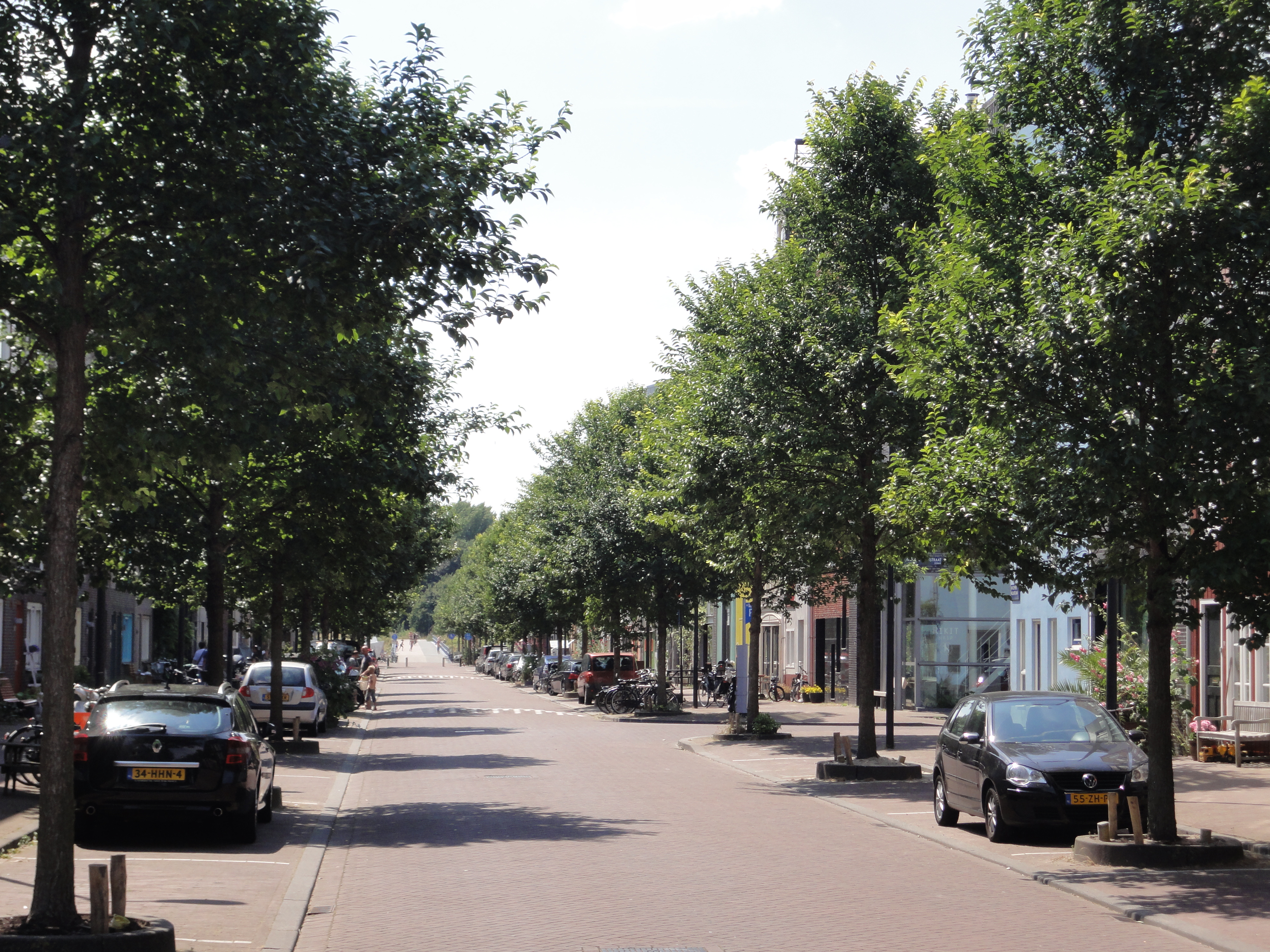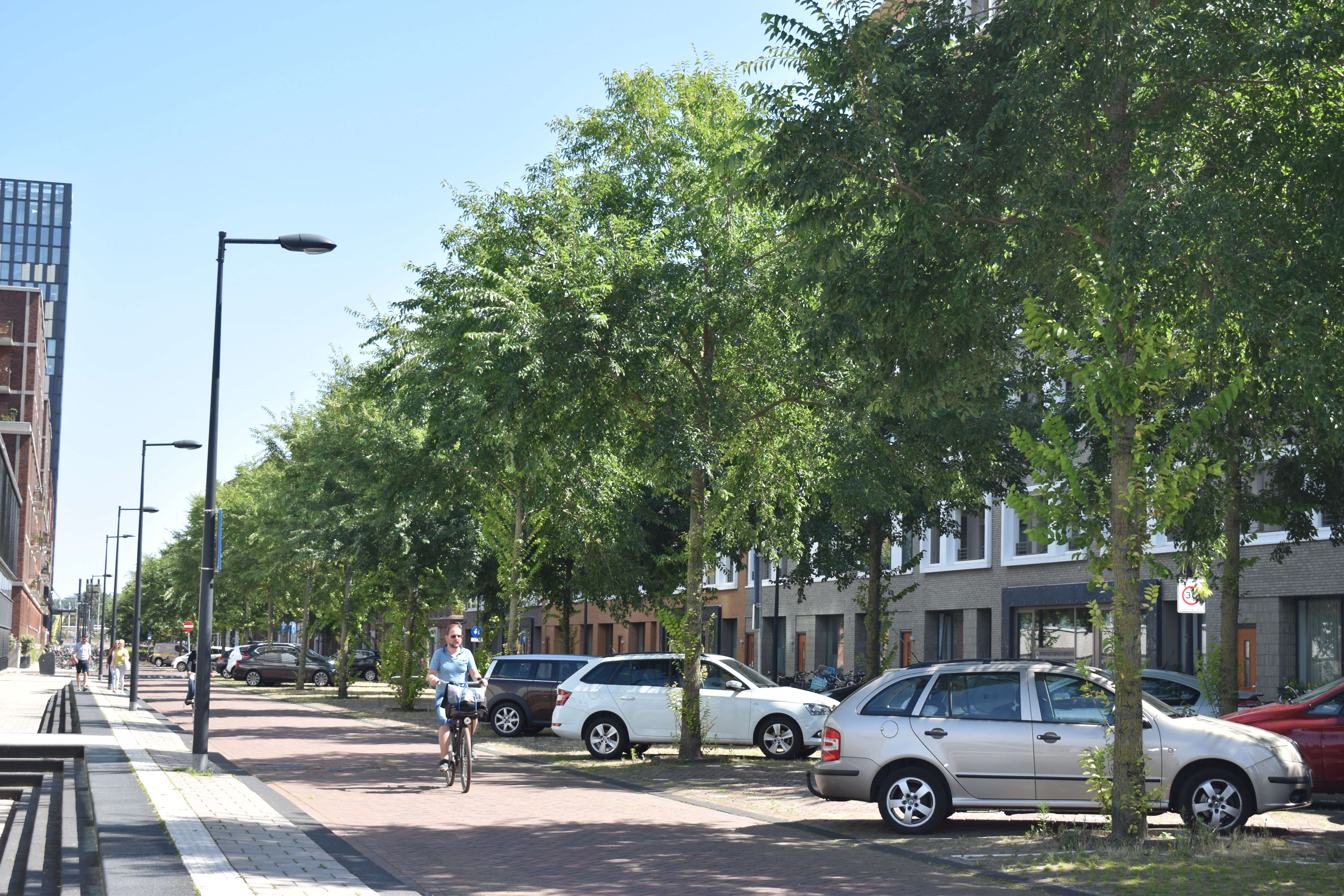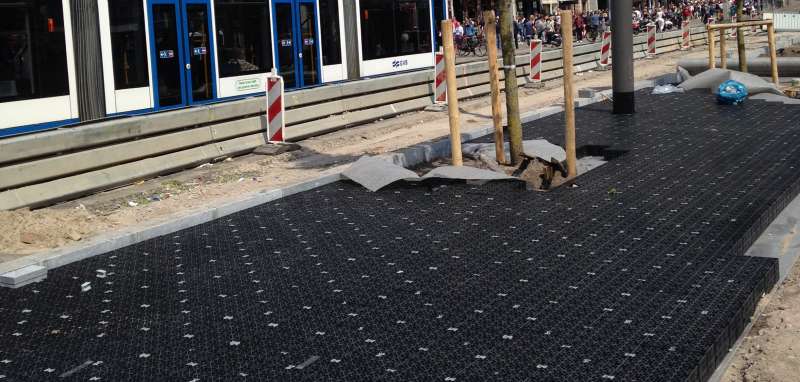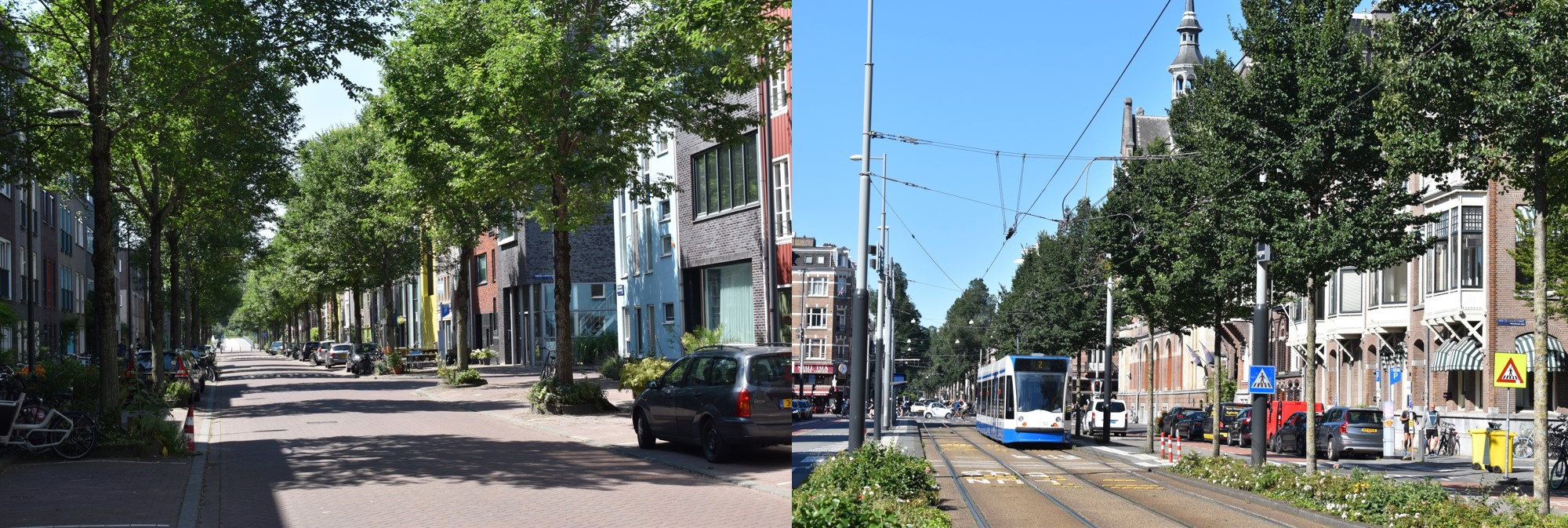ArborRaft Tree Root Protection
The damage casued by tree roots lifting pavements and disturbing services is now eradicated by using the ArborRaft system.

'Trees in the City'
For National Tree Week, we have invited Erwin Van Herwijnen of Tree Ground Solutions, our partner in the Netherlands as a Guest Blogger. Erwin is a tree technician with over 30 years’ experience and an expert on urban tree strategy.

Trees in the city usually don’t have a natural growing place like they would in the countryside or in city parks. The pressure on the growing site is enormous with the subsurface of the city changing slightly every year.
The root system of a tree will ensure its stability by making sure the tree receives everything it needs to thrive – water, oxygen and minerals. Without these the tree cannot survive.
If the underground circumstances are not optimal, this will result in poor development of the root system which is then reflected in the ‘crown’ of the tree. The crown of the tree tells its story and the tree cannot lie.
Trees with a leaf area of 80m² absorb between 40,000 and 80,000 litres of water in one growing season. They use most of the water only for transporting minerals. 90% of this water evaporates from the tree's crown. Due to this evaporation process, the increased humidity and the shade of the crown, the temperature in the vicinity of the tree drops. Studies from Toronto have shown that just 6% more green in a city can lower the overall average temperature by 2 degrees.
In addition to this excellent, natural air-conditioning a tree provides, a tree will also consume a lot of water providing a surface water management solution as well.
By retaining water in the soil of a tree pit, it doesn’t have to drain through the sewer system. These are just two important reasons to have trees in the city, of course there are many more reasons, but I'm not going to mention them now because that list is too long.
With the dynamic nature of the subsurface of the city and especially during city redevelopments, tree root systems are most disadvantaged. The roots of the tree cannot develop optimally when the ground has been compacted and closed entirely. As a result, existing trees begin to slowly die, and newly planted trees do not have a sustainable future.
It is important to incorporate tree planning early on in any development to ensure an optimal tree pit solution is installed to maximise the life span of trees and protect any existing trees. One of the most common mistakes is to lay a tree pit lower than the pavement which results in all the water from surrounding areas to flow into this pit.
While tree pits are excellent water management solutions, they cannot drain water indefinitely and there needs to be a healthy balance between water and oxygen in the soil.
In the Netherlands and our team at Tree Ground Solutions in particular, we have been looking for the perfect tree growing places since the early 1970s. We are not only creating growth places for new plantings but also preserving and protecting large image-defining trees.
One of the most sustainable solutions for trees in the city is the Treebox HP. A quick, easy-to-install solution that can be filled with the ideal soil for trees. We have also discovered another innovative solution as shown in the short case study below.
Case Study IJburg, Amsterdam
During the development of a new city district in Amsterdam (IJburg), it was difficult to install a supporting structure for trees to grow due to the limited amount of space and there was a desire to have the trees in place for a minimum of 60 years.
The only underground space in this district was under the parking strips along the road and tree sand does not have the load-bearing capacity to support the pavement and cars.
During this project, the innovation of the ArborRaft was born, a combination of tree soil with a geocellular raft system to create growing space for newly planted and existing trees in hard landscapes and in areas subject to vehicle loadings.

This system not only solved the problems of developing space to support trees underneath a road, but it also led to improvements in the overall tree pit design. It allowed for a better oxygen supply in the soil by creating a horizontal zone where gas exchange could take place below the pavement. Experience has taught us that this way of supplying oxygen works better than an aeration tube.
We were also able to fill the units with an organically rich substrate which is very similar to a top layer of a forest, a great environment for growing mature trees.
Now, 15 years later and this system has proved to be reliable and successful with no visible difference between the ArborRaft tree pit and a tree growing in the open ground.
This development was the start of an interesting journey that has given us many more innovative growing places for trees.
To book a 15-minute technical workshop on our solutions for trees, contact Charlotte Markey our Green Urbanisation Innovation Manager charlotte.markey@polypipe.com.

The picture above shows the trees planted in IJburg using ArborRaft in comparison to trees growing in open grounds.
The damage casued by tree roots lifting pavements and disturbing services is now eradicated by using the ArborRaft system.
The ArborRaft combines tree soil with a geocellular raft system to create growing space for newly planted and existing trees in hard landscapes and